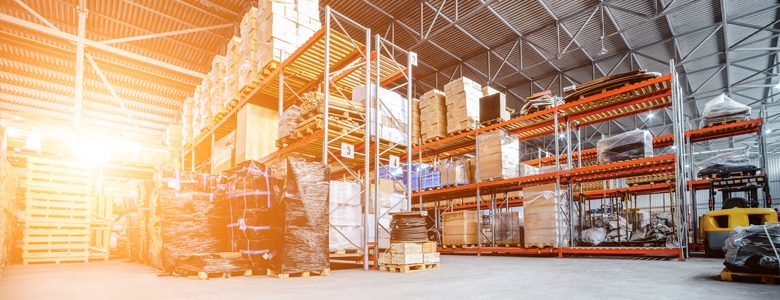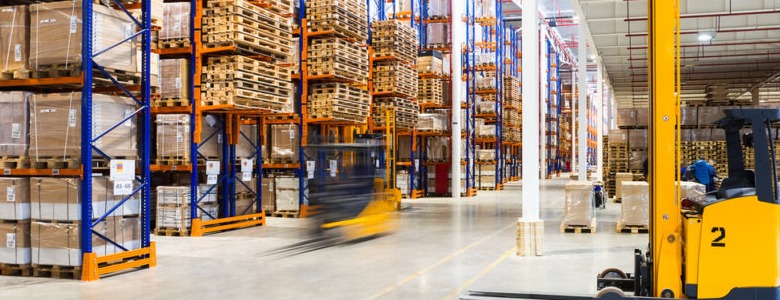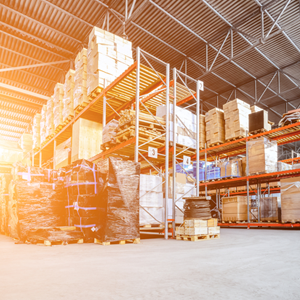In the second installment of our ‘favourite questions Google is asked’ series (the first being ‘Can a Forklift…?’), we take a look at warehouses. Most importantly, ‘why warehouse…?’ A global staple of the vast majority of industries, warehousing allows for many businesses to grow and thrive.
But still Google is asked pressing questions regarding these large, spacious facilities. As always, Hitec will endeavour to answer the call. We hope you find our attempted explanations useful!

Why Warehouses Are Needed/Important?
Let’s start from the top. In reality, this is two questions melded into one, because they both have the same answer; expansion.
A small business can only grow if it can supply demand – that’s where warehousing comes in. Goods can be stored in bulk, ready for shipment when they’re required. Facilities can be altered or built to requirement – if goods need to be kept in cold storage, refrigerated units can be installed.
Warehouses allow for the safe storage of additional goods that businesses such as retail, manufacturing, agriculture and transport are unable to keep on site. This can be due to space, site and money restrictions. Often, it can be cheaper to rent warehouse space than to build additional storage.
The bigger a business becomes, the more warehouses it may need to keep up with demand.
Why Warehouse Location Is Important
Warehouse location can be vital – if your warehouse is local to you, you’ll be able to supply your surrounding areas with ease. However if your warehouse is at a more central location, you may be able to cater to a larger audience – at the potential cost of taking additional time to deliver due to travel.
When it comes to businesses who have more than one warehouse, you’d be hard pressed to find an example that has all of their storage facilities in a cluster. More often than not, warehouses are spread out so that the can cover a larger area.
Sometimes warehouses are positioned due to logistics – they may be local to the transport business a company uses for delivery, or near an air or shipping port if goods need to be sent overseas.
It’s important to understand where your customers are when choosing your warehouse location. If they’re all over the country, then multiple warehouses in many locations would serve you well. If they’re in a specific area, a nearby warehouse can help minimise transport costs and transit times.
Why Warehouse Layout Is Important
If you can only afford one warehouse, then it’s important to make the most of the space. There are many different racking solutions available that can help increase your storage capacity. If your warehouse has lower square footage but high ceilings, narrow aisle racking could be the perfect solution. If your warehouse is wide with lower ceilings, you may instead benefit from double deep pallet racking.
It’s vital that you carefully consider what racking solution you decide on – choose wrong and you could be missing out on a lot of potential storage space. Similarly if you run your distribution operations from your warehouse, you’ll need to ensure that you have enough space for your inspection areas and packing bays.
Another thing to consider is the equipment you use in your warehouse. If you currently use a standard counterbalance forklift, but are short on space, maybe consider changing to a reach truck, an order picker or an articulated truck. Utilising one of these pieces of equipment could allow you to consider a different racking option and even increase the productivity of your employees as they would be able to move more freely.
Why Warehouse Safety Is Important
Safety in any work place is vital. Your employees are the muscles of your business and if they are compromised or hurt then your whole system can crumble. The welfare and safety of your employees should be your number one priority.
There can be particular danger in warehouse environments. Not only do you need to worry about the safety of your employees, but also of any structures, such as racking, and equipment you have in place. By ensuring that your employees have the correct training you can work to lower any potential dangers.
This is especially true for equipment operators. Forklifts, for example, are heavy, powerful machines and if used incorrectly could quite easily cause massive damage to your warehouse and fatally harm your workers. Safety lights, alarms and practices can all help to make sure people know when a forklift is nearby. Operator awareness can be raised by ensuring that they receive frequent training.
Making sure that walkways are clearly marked, that your floors are clean and tidy, your stock is appropriately stored, equipment moves at a slow speed and you regularly inspect your racking for faults and damage can all help to promote warehouse safety and protect your employees from harm.
Why Use A Warehouse Management System?
WMSs are a clever invention. Designed to aid the control and administration of warehouse operations, WMSs (Warehouse Management Systems), allow for complete visibility. From when goods arrive in your warehouse to when they leave, you’ll be able to monitor the fulfilment process, manage stock, orders and audit.
Typically accessed from a tablet, a WMS is a piece of software that allows for inventory management no matter where you are. If you’re looking for a smart way to streamline your operations, increase visibility and reporting and manage your supply chain with ease, a WMS could be the tool you’re looking for.
Although installing a WMS into your operations can be an expensive and complex process, you could in fact save money using one. How? By improving accuracy. A clear and correct inventory is more manageable and reduces errors in picking, packing and shipping goods. As a result there is a lack of lost stock, incorrect dispatches and improved customer service as people end up with the correct item without issue.
WMS software handles real time data this ensures that you have access to current information on operation activities, such as;
- Orders
- Shipments
- Receipts
- Movement of goods
Other common WMS features include;
- Warehouse design
- Inventory tracking
- Labour management
- Picking and packing
- Shipping and much more
So, if you’re looking for a method to help you better monitor your warehouse operations, a WMS could be the way forward. There’s software available for smaller businesses, large scale organisations and ecommerce giants. No matter what your size, there will be a WMS for you.
Why Use Warehouse Automation?
Although similar in question to the above, automation and WMS software are two very different things, so much so that they’re sometimes used in conjunction with one another. To help better explain how warehouse automation could help your operations, let’s first take a look at the different types of automation currently available;
- Goods-to-person (GTP) GTP involves automated equipment that brings items to a worker for packing. GTPs work by receiving orders from a central database, locating them in a warehouse, retrieving them and then delivering them to the awaiting worker in the packing area. With businesses who have utilised GTP experiencing higher throughput, it’s a quick and efficient version of automation that can also help reduce operating and order fulfilment costs.
- Automated storage and retrieval systems (AS/RS) A type of GTP, AS/RS systems automatically remove goods from storage, as well as place them INTO storage. Often they’re used alongside a WMS.
- Pick-to-light systems This system involves conveyer belts or carousels, wireless scanners and tote boxes. A barcode is placed on a tote which, when scanned, informs a zone orientated picker of what items are supposed to be loaded in, as well as the quantity of that item. LED order numbers illuminate at the pick locations allowing pickers to best determine their picking route. When the pick is complete, operators confirm so by touching a button next to the order number display. The tote is then moved onto the next zone or toward dispatch.
- Autonomous mobile robots (AMRs) Typically used in ecommerce fulfilment situations to help address high volume, high labour requirements, these autonomous robots often work alongside warehouse workers. The AMRs make their way through the warehouse, meeting up with the manual pickers who then place the required goods in their tote boxes. When the totes are full, the AMRs then transport the goods to the packing area. Another version of AMR uses vacuums and trays to pick boxes and totes onto mobile carriers.
Warehouse automation comes with a great many benefits. From increased speed in the picking process, to enhanced productivity from the manual pickers, automation can help you identify areas which need improvement, or that already work well. Your inventory management can also benefit as accuracy increases thanks to less human error.
Not only that, but your warehouse safety can improve thanks to automation. How? With less footfall, your workers are less likely to suffer from strains and fatigue. This also leads to lower warehouse traffic, which lowers the chance of accidents between workers and equipment. Because there is less need for workers to handle goods, there’s less chance of damage to both them and your workers.
Overall, warehouse automation could be an excellent addition to your business, especially if you’d like to enhance productivity and safety.

In conclusion, warehouses can be a vital component of any business. They can be utilised in different ways and there’s many different types of equipment and software available to help you get the most out of your space.
Still unsure of what warehouse layout, equipment or software would best suit your needs? Why not get in touch with our expert team? They’ll be more than happy to help guide you through what’s available. You can call us on 01933 228127 or email us at info@askhitec.co.uk.

